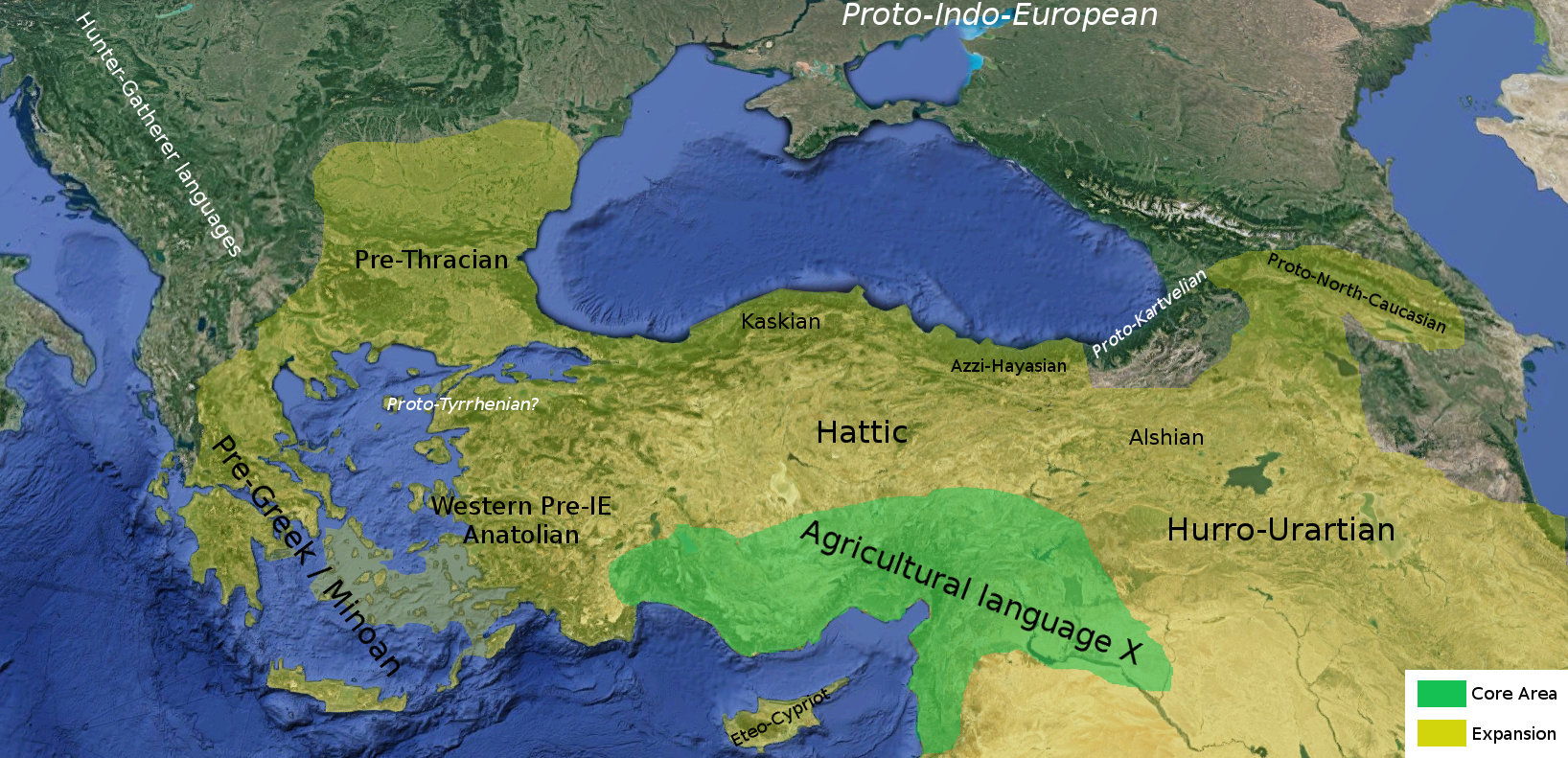Now, lets take a step back and have a look at the information that is available to us. There are downsides in this hypothesis and the most important one is the lack of enough material. First, we know very little about languages such as Hattic, Urartian and Eteocypriot. Regarding the later, we can read it but not understand it, even though there are Greek-Eteo-Cypriot billinguals available. The situation is somewhat better for Hurrian and the so called Pre-Greek substrateCurrently counting ~ 1000+ words. Nevertheless, this hasn't kept scholars away from trying to figure out the relationship those languages have with other known languages. For instance Hattic has been compared with West Caucasian languagesV. Chirikba (1996). Another studyKassian (2010) argues that Hattic cannot be directly compared with West Caucasian but very likely represents a separate branch of the Sino-Caucasian macro-family. Hurrian and Urartian have been compared with the East Caucasian languagesDiakonov & Starostin (1988). For Pre-Greek a relation to some unknown language of Western Anatolia has been argued numerous times in the past, while lately the idea of a agricultural language spread related to Hattic has been shyly proposedKroonen (2012), Schrijver (2007, 2011). Last but not least, Eteo-Cypriot has been compared to HurrianPetit (1995, 1997). So, where do we stand now? We have an interesting "equation", roughly speaking, where A = B, B = C, C = D and D = A. That's where an ongoing studyTardivo (ongoing), short introduction available here comes in to unify all these hypothesis to one. While all these sound really exciting, we have still a long way to go.
The map below is a demonstration of how the spread of agriculture 9000 years ago could have resulted the linguistic situation of the Aegean and near eastern early bronze age.

Further Reading
- Beekes, Robert. Pre-Greek: phonology, morphology, lexicon. Brill, 2014.
- Chirikba V., Common West Caucasian: the reconstruction of its phonological system and parts of its lexicon and morphology. Vol. 48. Research School CNWS, 1996.
- Kassian, Alexei. "Hattic as a Sino-Caucasian language." Ugarit-Forschungen 41 (2009): 309-448.
- Diakonov, I. M., and S. A. Starostin. "Hurrian-Urartian and East-Caucasian languages." Drevniy Vostok: etnokul turnye sviazi (1988): 164-207.
- Kroonen, G. J. "On the etymology of Greek άγλις and γέλγις 'garlic': an Akkadian loanword in Pre-Greek." Journal of Indo-European Studies 40.3/4 (2012): 289.
- Kroonen, G. J., "Non-Indo-European root nouns in Germanic: Evidence in support of the Agricultural substrate hypothesis", 2012 Copenhagen
- Schrijver, P., Keltisch en de buren: 9000 jaar taalcontact. Inaugural speech at the University of Utrecht, 7 March 2007. Utrecht : Faculteit Geesteswetenschappen, Universiteit Utrecht.
- Schrijver, P., La langue hattique et se pertinence possible pour les contacts linguistiques préhistoriques en Europe occidentale. In: C. Ruiz Darasse & E. R. Luján (éd.), Contacts linguistiques dans l’Occident méditerranéen antique, 241-255. 2011 Madrid : Casa de Velázquez.
- Petit, Th. "Amathous (autochthones eisin)." De l'identité amathousienne à l'époque des royaumes (Vlll-IV" siècles), Sources. Travaux historiques (1995): 43-44.
- Petit, Th. "La langue étéocypriote ou l' "amathousien": Essai d'interprétation grammaticale." Archiv für Orientforschung (1997): 244-271.